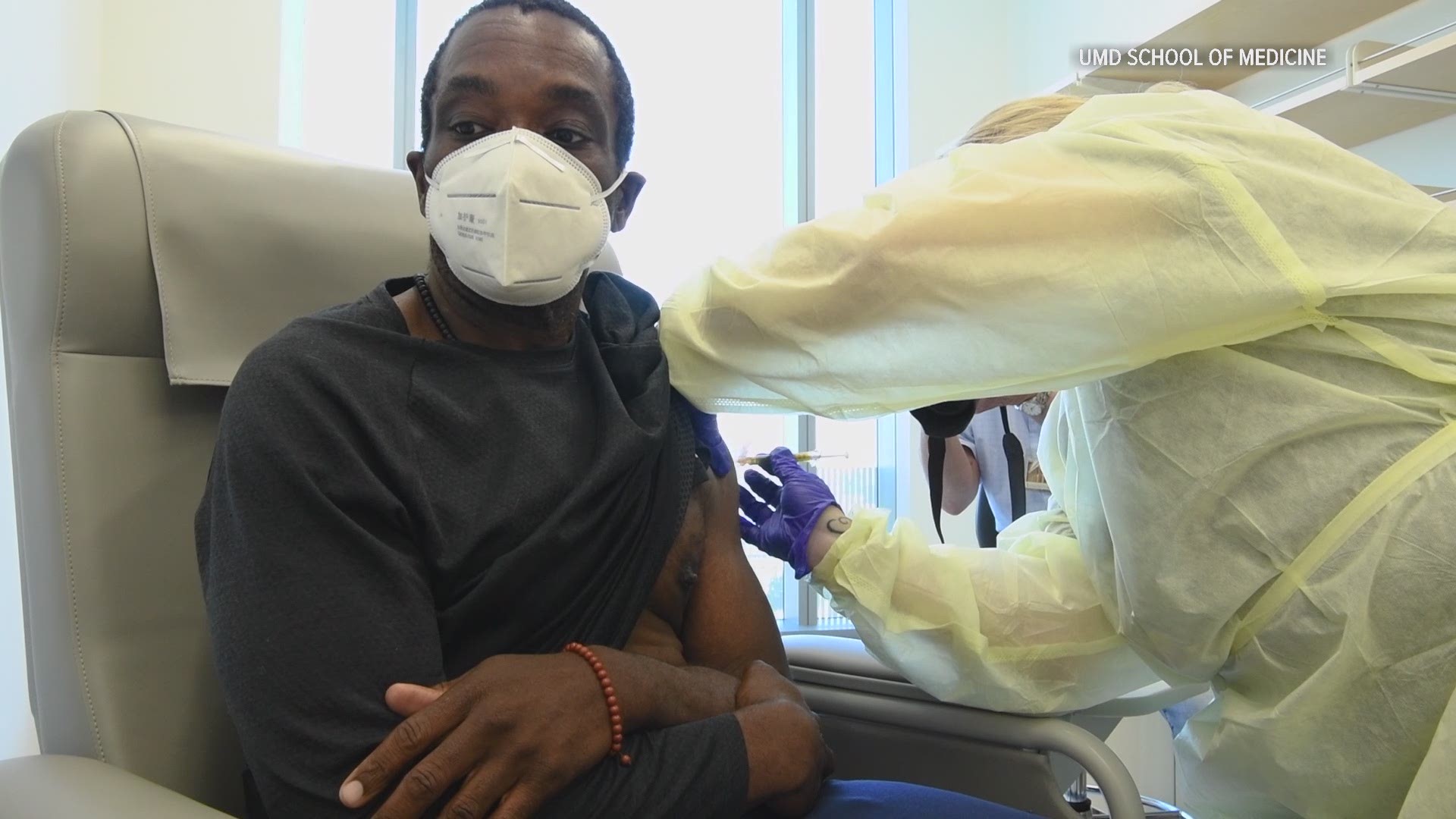WASHINGTON — It’s Monday, December 21, and more than a quarter of a million doses of the newly approved Moderna coronavirus vaccine are on their way to the DMV.
Maryland has said it expects to get around 100,000 doses of the vaccine – which was approved by the FDA for people 18 and older on Friday – and Virginia has ordered 146,400 doses of the vaccine. On Monday, Dr. Ankoor Shah, interim principal deputy director of DC Health, said the said was expecting to get 12,600 doses of the Moderna vaccine and 4,700 more doses of the Pfizer vaccine this week.
D.C. will also be getting more than 16,000 additional doses of vaccine through an agreement with Maryland and Virginia to help vaccinate DC health care workers who live in those states.
Shah said the District was allocated vaccine doses from the federal government based on its population, not on the size of its health care workforce, which has put it below where it needs to be.
“We are getting less than what we deserve, and that is a simple fact,” Shah said.
In case you’re just here for the numbers, here’s where the DMV stands today:
- D.C. reported 139 new cases of the coronavirus and 5 new deaths on Monday.
- Maryland reported 2,265 new cases and 23 new deaths from the coronavirus on Monday. The state is now averaging 46 deaths a day from COVID-19.
- Virginia reported 4,042 new cases and 4 new deaths from the coronavirus on Monday. The commonwealth has only reported more than 4,000 cases in a single day three times – all three this month.
How are things in the DMV?
While the seven-day average for new cases has declined slightly in D.C. and Maryland over the past two weeks (-4% and -16%, respectively), deaths are still way up across the DMV. D.C. is now averaging 3 deaths a day, Maryland is averaging 46 (up 48% from two weeks ago) and Virginia is averaging 34 (up 70% from two weeks ago).
In D.C. Mayor Muriel Bowser has decided on a three-week “holiday pause” – to go into effect Wednesday – to try to slow the spread of the virus. The pause means indoor dining will be closed, outdoor dining structures must have two open sides, non-essential workers who can telework must do so, and new restrictions on retail and houses of worship.
Bowser said she targeted dining specifically because it has “pretty consistently… been cited as one of the sources” of new coronavirus cases. New exposure data DC Health began publishing last week shows more than 15% of new cases from Dec. 11-17 reported dining out in the two weeks prior to developing symptoms. Dining out ranks third, behind work (31%) and social events (22%).
That exposure data also shows how infection control adherence is becoming more lax – and, possibly, more difficult – as the pandemic stretches on. In July, for example, 56.7% of COVID cases who answered a contact tracing interview said they had attended an indoor event in the two weeks prior to developing symptoms. That number has been steadily rising as the pandemic has gone on and as the weather has gotten colder. As of last week, 91% of contact tracing respondents said they had attended an event that was at least partially indoors.

